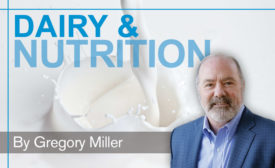Articles by Gregory Miller
Plant-based alternatives do not have the same protein benefits as dairy foods
Read More
Studies link dairy foods with cardiometabolic health
Eating dairy could reduce type 2 diabetes, lower risk for stroke and improve cholesterol.
June 14, 2019
Dairy could capitalize on anti-inflammatory trends
Recent studies show some dairy products reduce inflammation
March 14, 2019
Dairy consumption may promote heart health
Dairy foods, as part of overall healthy eating patterns, are linked to reduced risk of high blood pressure and cardiovascular disease among adults
December 10, 2018
Fortifying milk: How ingredients add value
Extra vitamins such as A and D, along with other components (extra calcium, omega-3s and probiotics), offer bonus nutritional benefits in milk
September 5, 2018
Understanding the fat, sugar and calories in cow’s milk to make the best choices
Decoding dairy
June 5, 2018
Dairy’s role in the health of people and the planet
Sustainability is about more than just the environment. It’s about how agriculture and nutrition must balance social, economic and environmental priorities.
June 5, 2017
Is there flexibility in fat levels of milk when it comes to health?
Growing evidence supports the association between full-fat dairy foods and neutral to positive health outcomes.
March 9, 2017
Dairy foods are essential for healthy aging in baby boomers
Eating the high-quality protein found in dairy foods can benefit older adults in overall health and help reduce the loss of muscle.
June 2, 2016
Stay ahead of the curve. Unlock a dose of cutting-edge insights.
Receive our premium content directly to your inbox.
SIGN-UP TODAYCopyright ©2025. All Rights Reserved BNP Media.
Design, CMS, Hosting & Web Development :: ePublishing


